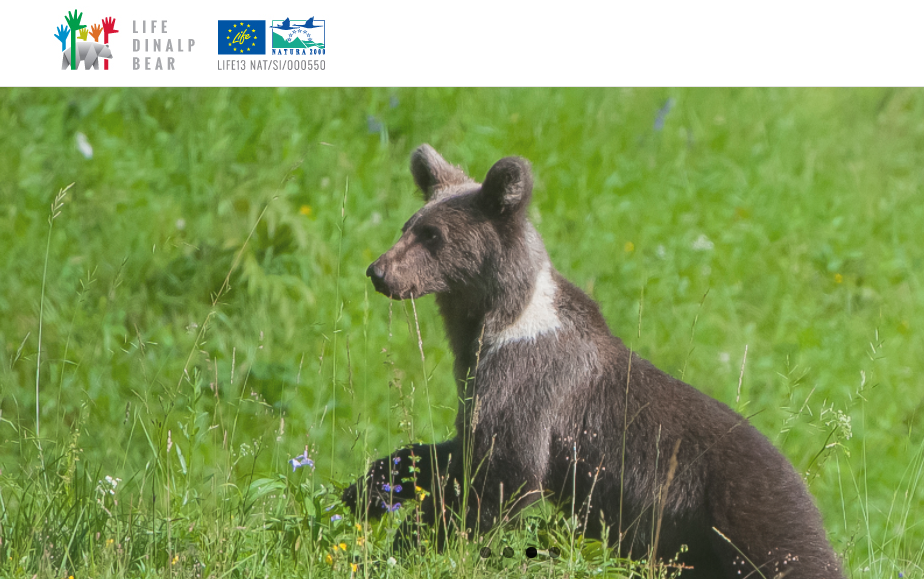Living together: coexistence between people and large carnivores – Outcomes
In the beautiful alpine landscape of the Prealpi Giulie Nature Park, a mountainous boundary for humans, but an important ecological corridor for wildlife, EUROPARC organised a three days networking seminar on large carnivores. The event has been a great success, with more than 80 participants from different parts of Europe. Today, we bring you the main outcomes of the Networking seminar.
Prevention, compensation, incentives, communication, education, information, monitoring, dialogue and learning exchange, are only few of the key words of this path, along which protected areas can play an important role.
Wildlife return: paving the way to Coexistence
If the return of wildlife in many parts of Europe is to be considered a success for nature conservation, it constitutes for many also a clear challenge, bringing new questions for local communities, farmers and breeders, hunters, local authorities, protected areas, conservationists, and many others.
The two extreme positions, well summarised in the recurring “or us or them” argument, whoever pronounces it (farmers, hunters, breeders, conservationists or the large carnivores), won’t bring us far!
The attention should rather focus on coexistence. The perspective has to change to identify the new questions and propose adequate solutions.
Living together: building trust
The perception of people is an interesting indicator, and shows that the tolerance is lower where Large Carnivores have been absent for a long time. But, even if this may have an important impact, it cannot be the main driver for decisions. A priority is to ensure common and scientific based monitoring protocols, in order to have clear data for a more effective management of the species.
It is therefore crucial to base actions in this context on sound and scientific data, taking into account that most energies will then have to be dedicated to build trust with and among stakeholders and to deal with emotions and politics.
Many other aspects have to be considered as well:
- ensure that the scientific research is functional for effective management;
- the need to improve connectivity, to ensure enough space for wilderness and to plan and manage at a wider scale;
- the role of protected areas and the implication of Large Carnivores presence in areas that are not under specific management/conservation regimes;
- the relation between Large Carnivores and hunting and tourism sector… and much much more.

DINALP Bear Project
Solutions and good examples
Prevention and compensation measures are still crucial to support the work of farmers and breeders, and to promote coexistence. In some areas, the damages can be quite high as farmers and breeders are unprepared for the return of Large Carnivores that have been absent for so long. Costs for adapting zootechnics methods can become unsustainable if left only on the shoulder of farmers.
For this, Rural Development Programs are supporting specific measures for prevention in many countries (interesting cases from Trentino and Piemonte in Italy, and from RDP in Slovenia) and several LIFE projects have developed innovative methods and produced successful results. Among them:
LIFE WOLFALPS
The WOLFALPS project aims to implement and coordinate wolf conservation actions in key core areas and beyond in the Alps ecosystem, from West to East, to further support the natural wolf alpine recolonization process, encompassing several Parks in Italy and Slovenia.

LIFE DINALP Bear
Dinalp-Bear A project that aims toestablish non-lethal solutions for coexistence with brown bear in northern Dinaric Mountains and the south-eastern Alps, encompassing 4 countries: Austria, Croatia, Italy and Slovenia. Project ongoing until 2019.

LIFE MedWolf
MedWolf Best practice actions for wolf conservation in Mediterranean-type areas that took place in Italy and Portugal. Aiming to decrease the conflict between the wolf’s presence and human activities in rural areas, where cultural tradition of coexistence with predators has been lost.

Communication, awareness raising & education
Even if it is probably unrealistic to expect farmers and breeders welcoming the return of Large Carnivores, there are still ways to ensure a successful coexistence. Communication, awareness raising and education play an important role to ensure a better understanding of challenges and opportunities. The Junior Ranger programme and the Youth+ initiative promoted by the EUROPARC Federation can be useful to reach the young generation in protected areas.
Moreover, the organisation of learning exchanges among managers and farmers, the promotion of dedicated discussion platforms for stakeholders, the organisation of training sessions for teachers and journalists can be very effective. The province of Trento has, for example, developed an interesting dedicated communication plan on bears targeting different audiences.

The workshop has been once more an opportunity to strengthen the dialogue among different stakeholders and to share experiences and perspectives on a delicate issue. The workshop took place in the framework of the 2017 initiatives of the EU Platform for coexistence between people and large carnivores, with the kind support of ELO – the European Landowners Organization, the active engagement of the hosting Park and the expertise of the University of Udine and was framed within the Natura 2000 Biogeographical Process for the Alpine Region.

EUROPARC is keen to bring forward the discussion and to facilitate the organisation of more focused and thematic workshops on Large Carnivores in the near future. We would also like to take the opportunity to thank once more the speakers and the Prealpi Giulie Nature Park for hosting the event.